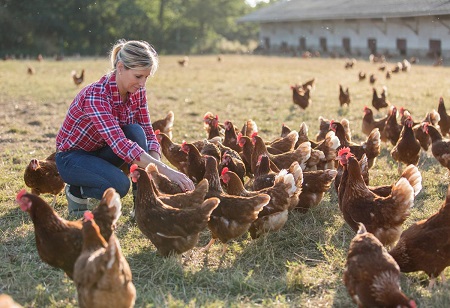As
animal nutrition is highly imperative for the productivity as well as health of agricultural animals, several firms & programs that include the National Animal Nutrition Program serves as a medium for identifying high-priority animal nutrition concerns. These organizations render a systemic & integrated approach for assembling, collecting, sharing, synthesizing & publicizing science-based information as well as educational tools for animal nutrition. This is mainly to increase high-priority research among agricultural animals. Various governments are following this approach and implementing these systems to redefine the roles of industry & government to deliver safe nutrition to animals.
The demand for animal derived-protein will increase twice the current demand, globally by 2050, as per the
Food and Agriculture Organization. Surge in consumption of animal products as well as livestock make a critical contribution to the nutritional as well as economic well-being of thousands and thousands of people around the world.
There has been a rise in pressure on the livestock landscape in order to meet the surge in demand for high-value animal protein. Furthermore, urbanization is a significant factor bolstering and buttressing the demand for livestock products owing to enhancements in infrastructure, that includes cold chains, allowing trade in fresh goods. When compared to the rural population, the city population have a different diet that is rich in animal fats as well as proteins & characterized by increasing consumption of poultry, meat, milk & various other dairy products.
Challenges
Rise in prices of raw material, and surge in number of restrictions as well as regulatory bans, will serve as market restraints for the growth of feed and animal nutrition market. Less product awareness will serve as a constraint which would challenge the growth of the feed & animal nutrition market growth over the forecast period.
A very crucial industry that been identified as critical global during the pandemic was Agriculture & food production. Owing to this, farmers have continued to make sure that the agricultural animals get high-quality nutrition for feeding a growing number of consumers, globally. However, the supply chain disruption has evolved the most important factor that has affected the feed & animal nutrition market.
Animal feeds play an important role in the global food industry as feed is the most significant and crucial factor in ensuring huge, safe & affordable animal proteins. Both young as well as growing animals require nutrients for meeting the needs of particular growth phases. They need perfect nutrition for growth & development of organs, muscles as well as bones. Nutrient requirements of animals also evolve with age. For example, older animals would have health problems that are related to aging, that need the diverse nutritional needs like mineral & vitamin supplements.
Why is Eubiotics gaining importance
Eubiotics are now gaining importance owing to their immense application in enhancing feed digestibility, nutrient absorption & better animal performance. These are now replacing antibiotics for better health & performance of livestock. Several international players are mainly focusing on manufacturing of varied kinds of Eubiotics. These can mainly be used for diverse livestock. Surge in consumption of poultry products as well as increasing preference for white meat over red meat is anticipated to drive growth of the poultry landscape.
BASF & Cargil have collaborated in the animal nutrition business last year, in order to add R&D capabilities & new markets to the partners’ current feed enzymes distribution agreements. This collaboration has helped to develop, produce, market & sell customer-focused enzyme products as well as solutions for animals.
The road ahead
Illness in livestock is often associated with decrease in appetite & reduced feed consumption. The effect of infections as well as various other illness on the nutritional status of an animal is based on the kind & severity of the illness. Appropriate nutrition is highly critical for early restoration of normal health of a diseased animal & most importantly, right from the production animal point of view it is a key health approaches to increase or make well the loss in the productivity. Although the concept is established in pet animal practice, the application of the concept in large animal practice is not widely adopted, still.
However, the concept of specialized nutrition of diseased animals may hold its position in agricultural animal practice in the near future is owing to the changed perspective of livestock production that is coupled with a focus on feed-food safety as well as animal welfare. In the changing scenarios – having huge production is not just enough rather increased animal productivity, animal product safety as well as quality, animal welfare & health and protection of environment as well as biodiversity are also being demanded to a greater extent. Growing awareness & emphasis on animal welfare, product safety and quality and environment, have become the first priority in food production systems that involves animals.
